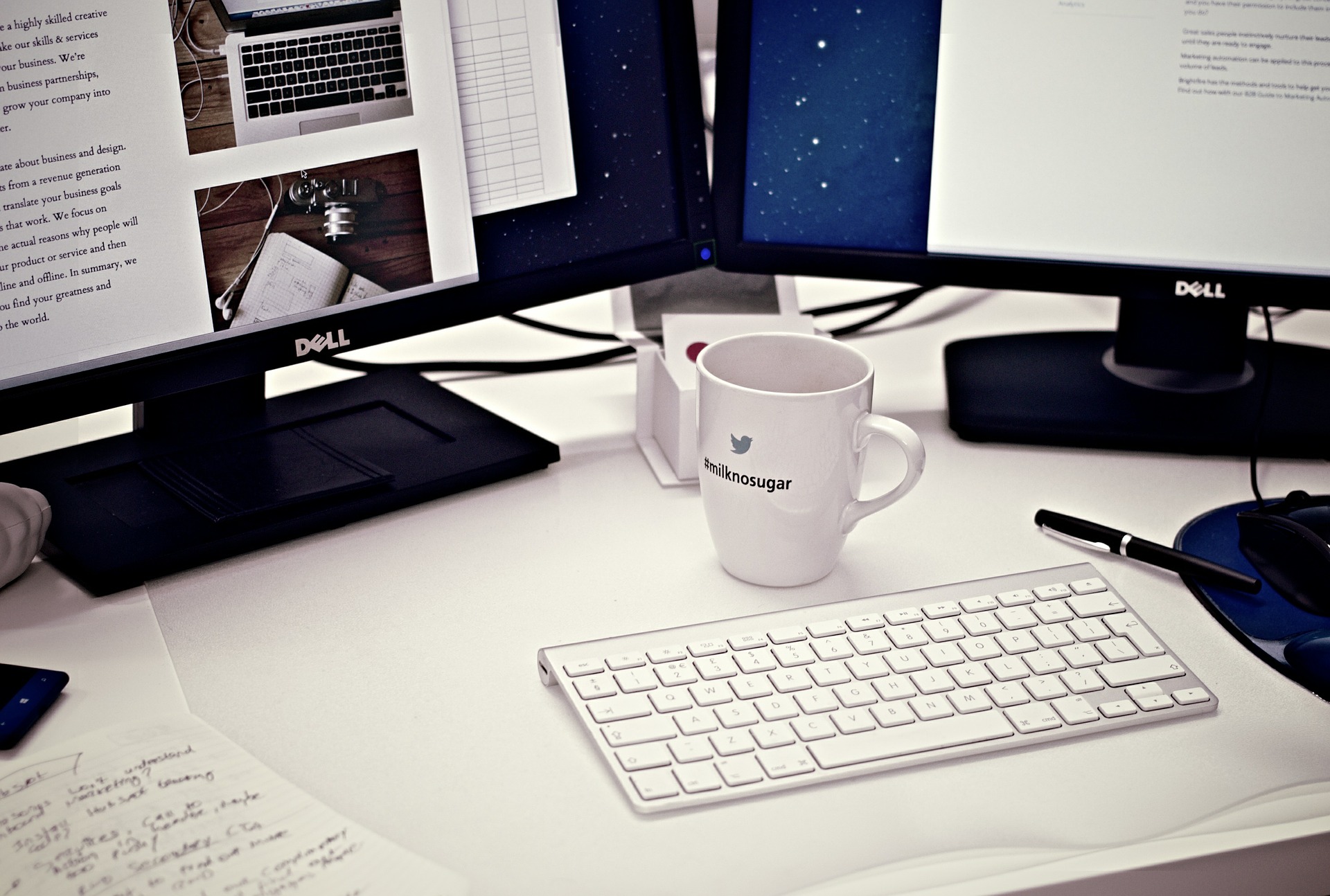
Back pain is one of the leading causes of workplace absence, costing the economy £5 billion a year (£554 per employee). It’s a problem that affects lots of people, so change is needed. How do we prevent office back pain? Well, a badly-designed office is far more likely to cause employees discomfort.
A badly-designed office is a place where people:
- Are rooted to the same spot all day.
- Have no access to exercise facilities.
- Have to sit down to carry out their tasks.
- Make small, repetitive movements all day.
- Use handheld technology.
- Feel pressured to come in early and stay late.
- Eat at their work stations.
- Adopt poor postures.
- Experience mental stress.
- Are too tired to exercise at the end of the day.
- Gain weight over time.
These are all factors that not only affect employees’ mood and productivity, but their health too. For employers, taking a hard look at the office environment is crucial – not just to reduce costs related to absenteeism and workplace incidents, but to protect their employees.
We want to prove that it doesn't take much to transform an office into a healthier, more productive environment. Considering that back pain is one of the leading causes of workplace absence, costing the economy £5 billion a year (£554 per employee), we know it's worth the initial investment. Here are 13 changes you can make to start creating a back-pain-free office right now:
1. Water is life - get your office drinking more

We're all by law obliged to provide our employees with safe drinking water. But are we drinking enough? Some experts believe that dehydration can actually cause and exacerbate back pain. One study by Dr. Toby Mundel and a team of scientists at New Zealand's Massey University found that the more dehydrated participants were, the higher they rated their pain.
While we can't claim that drinking water will stave off back pain, we do know that staying hydrated offers a wealth of benefits - especially to people in offices who are required to function highly for long periods of time. Not drinking enough water can lead to:
- dizziness
- headaches
- tiredness
- dry mouth, lips and eyes.
So, consider putting up posters, setting up reminders and positioning water sources in higher-traffic areas to promote the benefits of drinking more water.
2. Counting steps - make breaks count
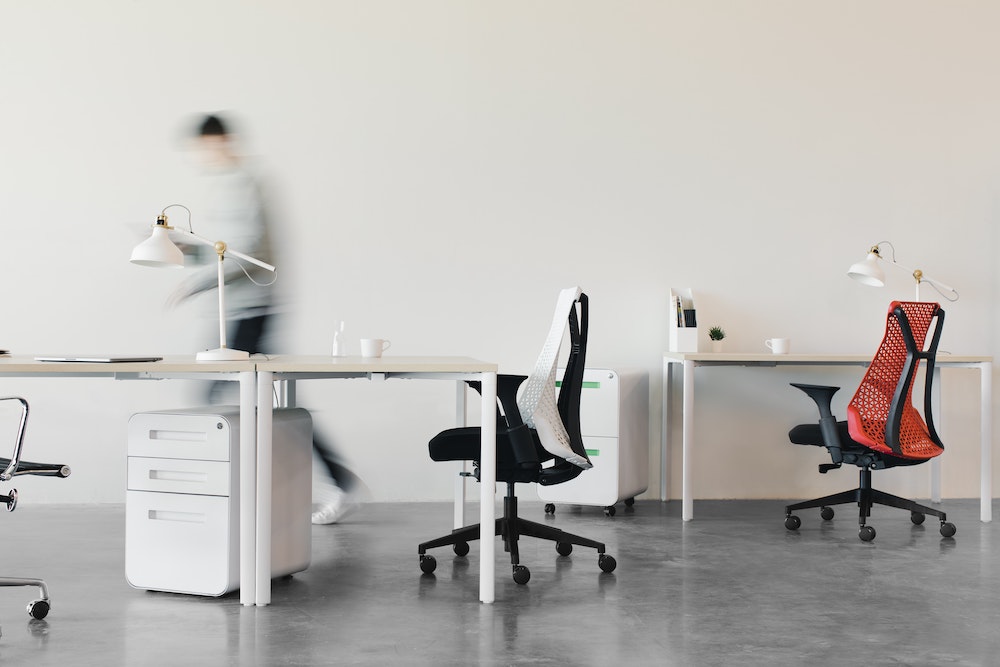
Most office work is naturally sedentary. Unfortunately, studies show that spending more than six hours a day sitting down can increase your risk of diabetes, obesity, cardiovascular disease, some cancers and a variety of musculoskeletal disorders (MSDs) - including back pain.
Luckily, small, frequent movements can reverse this effect. Encourage employees to take breaks and get to their feet more often. You could even give out pedometers (step counters) or run competitions to see who can rack up the most steps.
3. Reach for the sky – get stretching
.jpg)
There are several studies that demonstrate the physical benefits of stretching in the workplace.
If you’re unsure where to start, hire a yoga or pilates instructor to come in and teach staff stretches they can build into their daily routines to increase flexibility, loosen up tight muscles and decrease the risk of musculoskeletal injury. For more inspiration download our free Workstation Exercises help sheet here.
4. Transform that dusty meeting room into an exercise area
.jpg)
If you have an unused space in your office, consider transforming it into a basic gym. This doesn't mean you have to invest in state-of-the-art equipment; some of the most effective exercises don’t require any special tools – for example, planks, press ups and sit-ups. Simple, low-cost equipment includes:
- yoga mats
- gym balls
- skipping ropes
Email round weekly exercise ideas for all abilities to encourage staff to use this new active space. Even short workouts help build our muscle strength, which helps prevent back pain.
5. Ergonomic seating - saves you money in the long-run
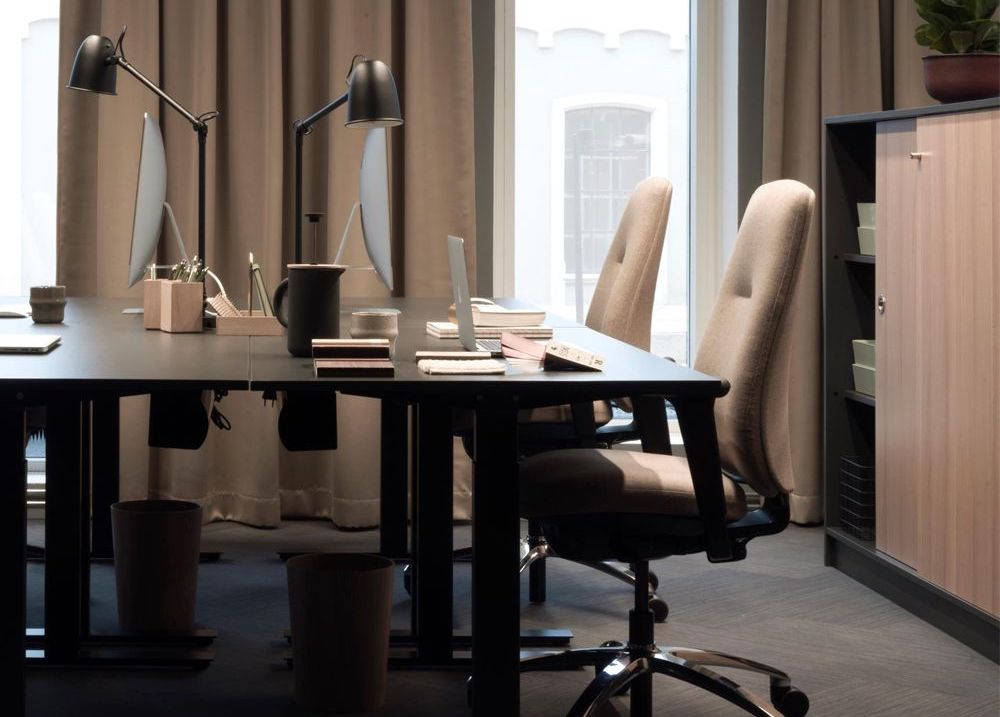
Good ergonomic task seating is a must for reducing office back pain. These are chairs that have been purposefully designed to support the spine correctly - with moving parts to adjust to different people's bodies.
Ergonomic chairs don't have to be expensive. In fact, we think they can save you money in the long term. Visit our Seating Projects page, which is full of valuable information about choosing the right chairs for your organisation.
6. Tech neck-busters - straighten up your habits
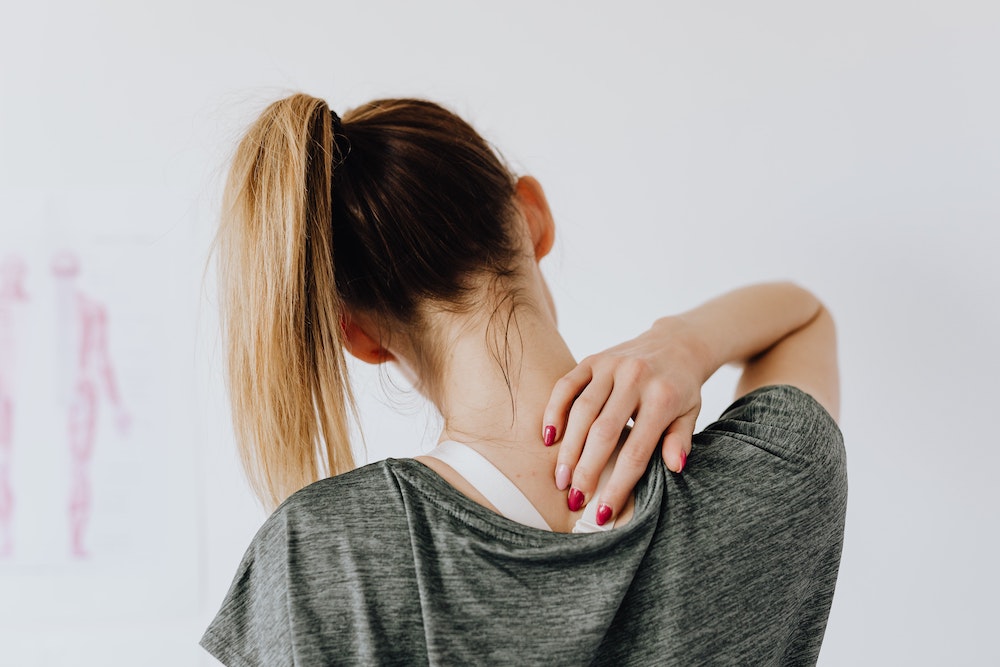
If your employees are using smartphones, tablets and laptops to carry out their roles at work, then they're at a higher risk of developing what's been dubbed 'tech neck'. The head-hanging position many of us adopt to use these devices quickly causes aches, back pains and long-term problems. Avoid tech neck by pairing handheld tech with ergonomic devices like laptop stands, reading tables and tablet holders.
7. Liberate your desk jockeys
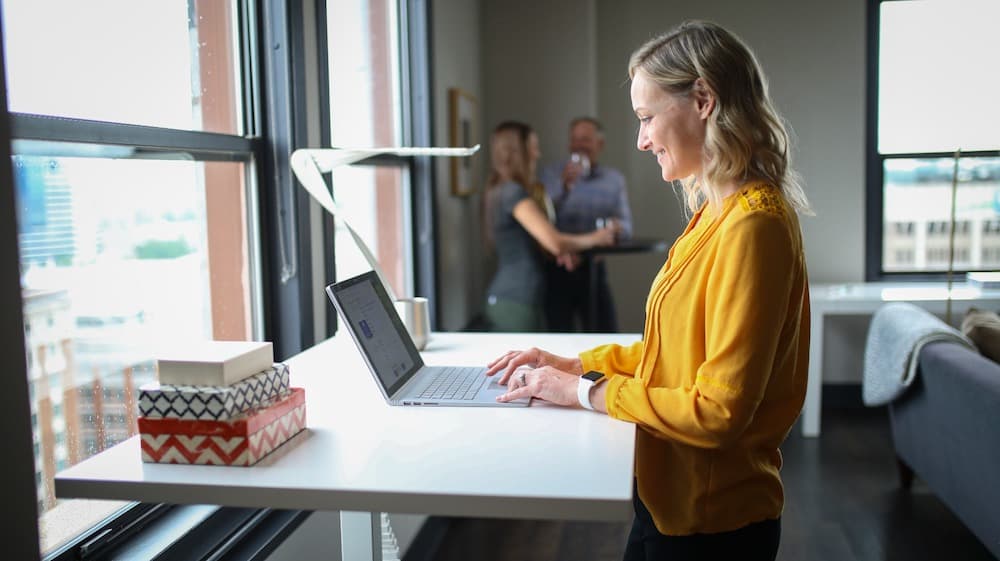
We don't necessarily have to sit down to use our computers. It’s just as effective to work standing up.
In 1994, we developed a desk that could be adjusted from a sitting to a standing height so users could move between the two. This gives users the freedom to sit and stand throughout the day, raising activity levels and reducing the risk of back pain developing. Browse our full selection of sit-stand desks here.
8. Step up your interior design
.jpg)
The lay-out of your office directly influences people's behaviours and daily habits, so design with activity in mind. How can you get people to move more? Can you put the printers and photo copiers upstairs? Put the water cooler further away? Initially it might feel like this distance is counter-productive, taking up time that could be spent working. But these small steps add up - and if they add up to healthy, pain-free employees, then isn't it worth the time?
9. Wellness programmes - a concerted effort to make office life better

A wellness programme addresses all elements of office life. Usually, it involves a consultant coming in to assess a workplace and report on what could be improved. At the core of every wellness programme is the question: how can we adapt the office environment to ensure employees are as happy, healthy and productive as they can be? Contact our consultants today to register your interest in a wellness programme.
10. DSE assessments - a few simple changes can transform your office
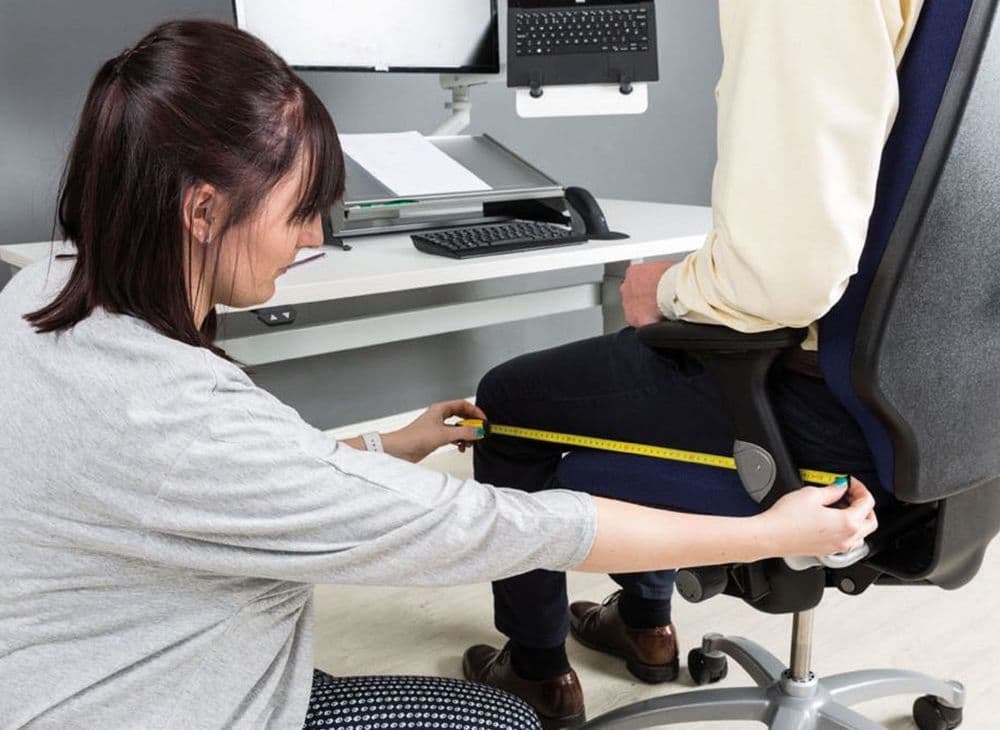
DSE regulations must be followed by all organisations where people frequently use display screen equipment (computers/laptops/tablets etc.). However, DSE is more than just a formality. A quick assessment by an expert can identify problems that could otherwise escalate into much bigger and more damaging issues, including back pain and other health concerns.
DSE is all about prevention and for minimal spend, you could save your organisation a lot of money, time and resources in the future. Book a DSE assessment.
11. Nutrition - fuelling performance

Being overweight can cause and worsen back pain. The more weight you carry, the more pressure there's going to be on your spine. Unfortunately, office life is not conducive to weight loss. When we're sitting down all day and fuelling up with sugary or fatty snacks, chances are our bodies will begin to cling onto that fat.
While employers can't dictate what staff eat, they can encourage healthy eating. Consider introducing a free fruit drop to all departments so when the urge comes to snack, people have the option to avoid sugar-heavy treats like chocolate bars.
12. Microbreaks are good
.jpg)
Microbreaks keep our bodies moving. Even just standing up to have a stretch can raise your pulse and improve your blood-flow.
Try to encourage staff to get up and talk to their colleagues instead of messaging or emailing. Make sure they know it's okay to pop out for a two-minute loop of the building, or a quick breath of fresh air at the window. These small conscious decisions keep us more alert, more active and more importantly they break us out of those bad postures that contribute to back pain.
13. Agile working policy
.jpg)
Agile working is an increasingly popular concept for office life. It revolves around the idea that many office jobs can be carried out anywhere - so why shackle people to their desks?
Allowing remote working and flexible hours not only improves work-life balance (and therefore mood and happiness), it also encourages more physical activity. It’s the idea of the static desk that keeps us so sedentary. What if we were able to move from workspace to workspace throughout the day? What if we were able to work in a cafe for a morning, or go home and use our home offices seamlessly using remote technology?
Of course, with staff travelling for work its important that they stay comfortable, fit and healthy on the road. So, provide lumbar rolls and recommend regular stop-offs. Agile working is more than just being able to work how we want, when we want and where we want - it's about keeping the mind and body stimulated; constantly changing the dynamic of the workplace to foster innovation and avoid stagnancy.
Avoiding back pain while working from home
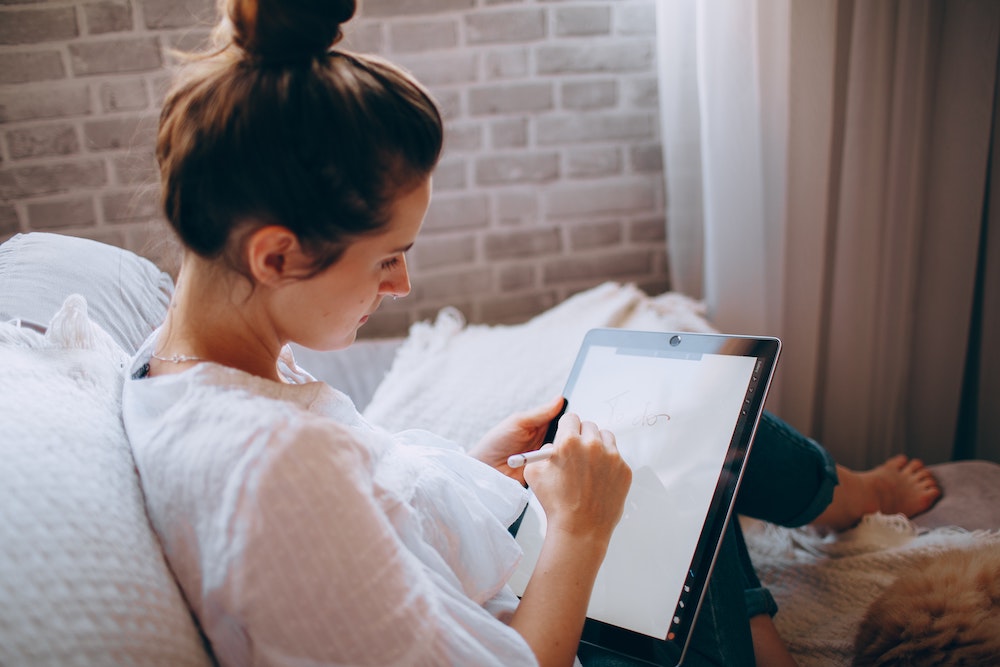
If employees are experiencing back pain while working from home, they’re not alone. However, employers have a responsibility for their workers’ health outside of the office too.
So, as well as optimising our office spaces, it’s important to consider remote workers. Read our working from home back pain guide to find out more about how to prevent back pain at home.
Doing the best for your employees, and your business
Now you know how to transform your office into a productive and pain-free space. For additional help and advice, contact us.
From advice choosing new and ergonomic office equipment to detailed assessments of your workspace, there are a number of ways we can help take your office to the next level.










